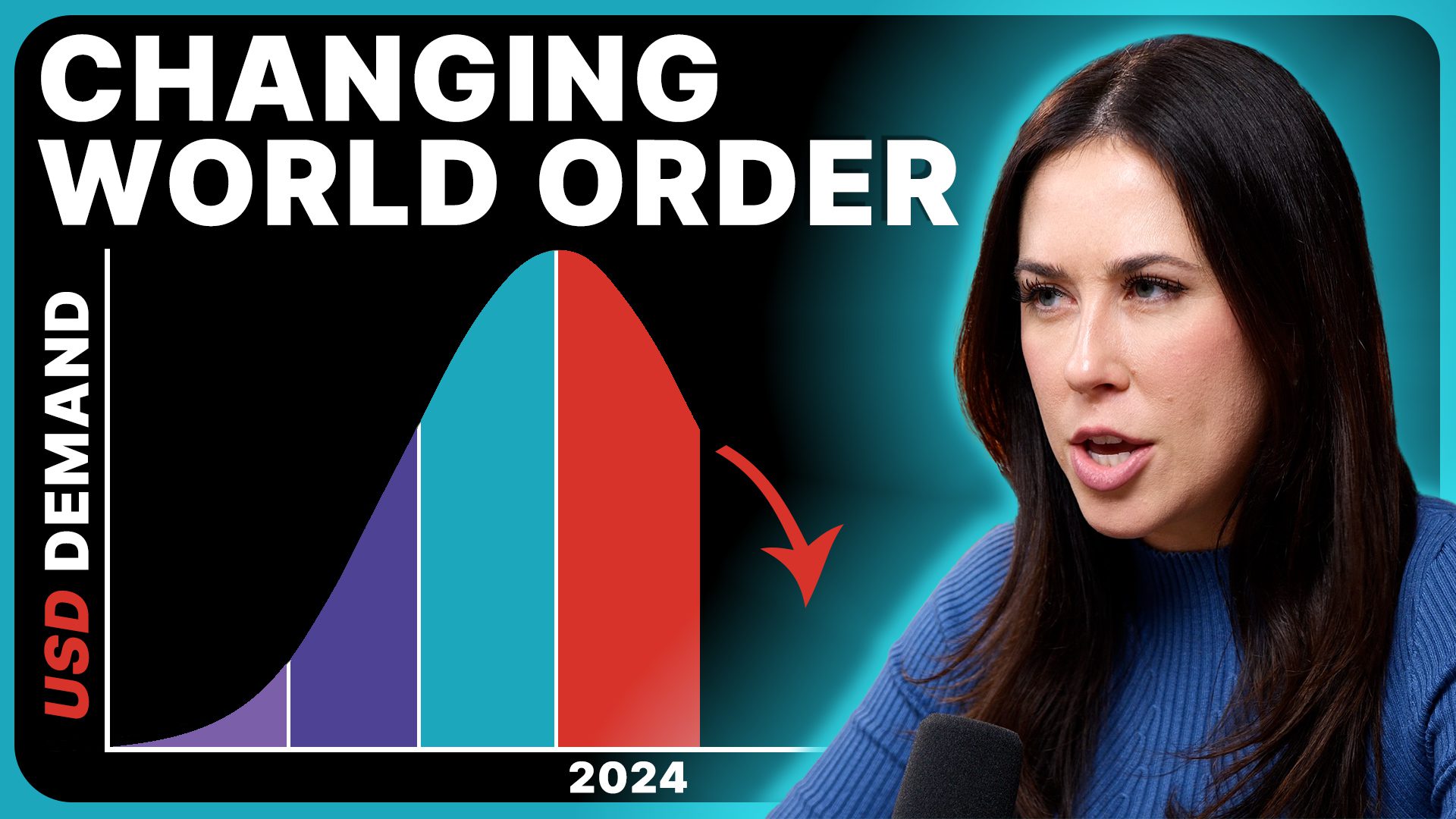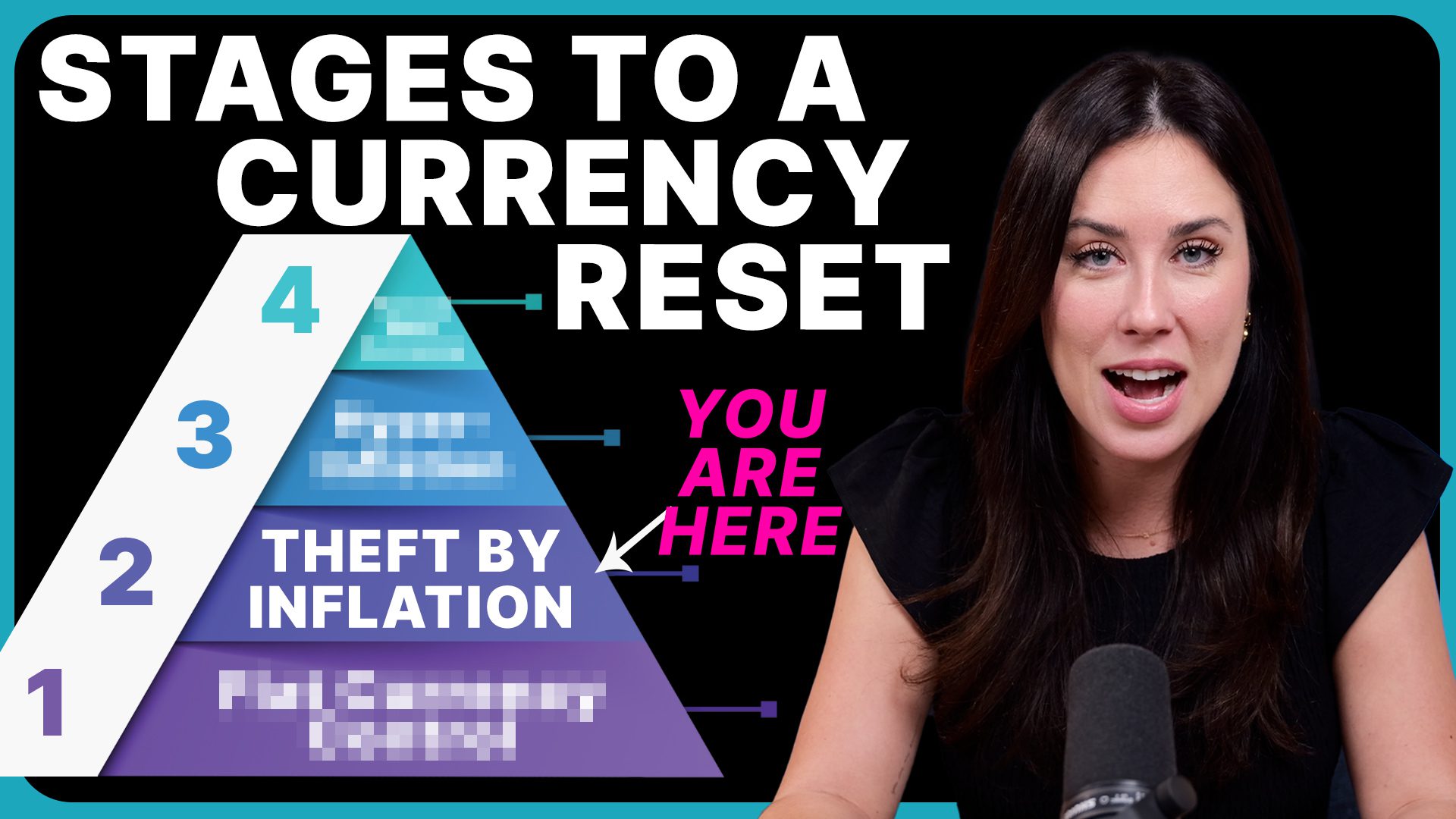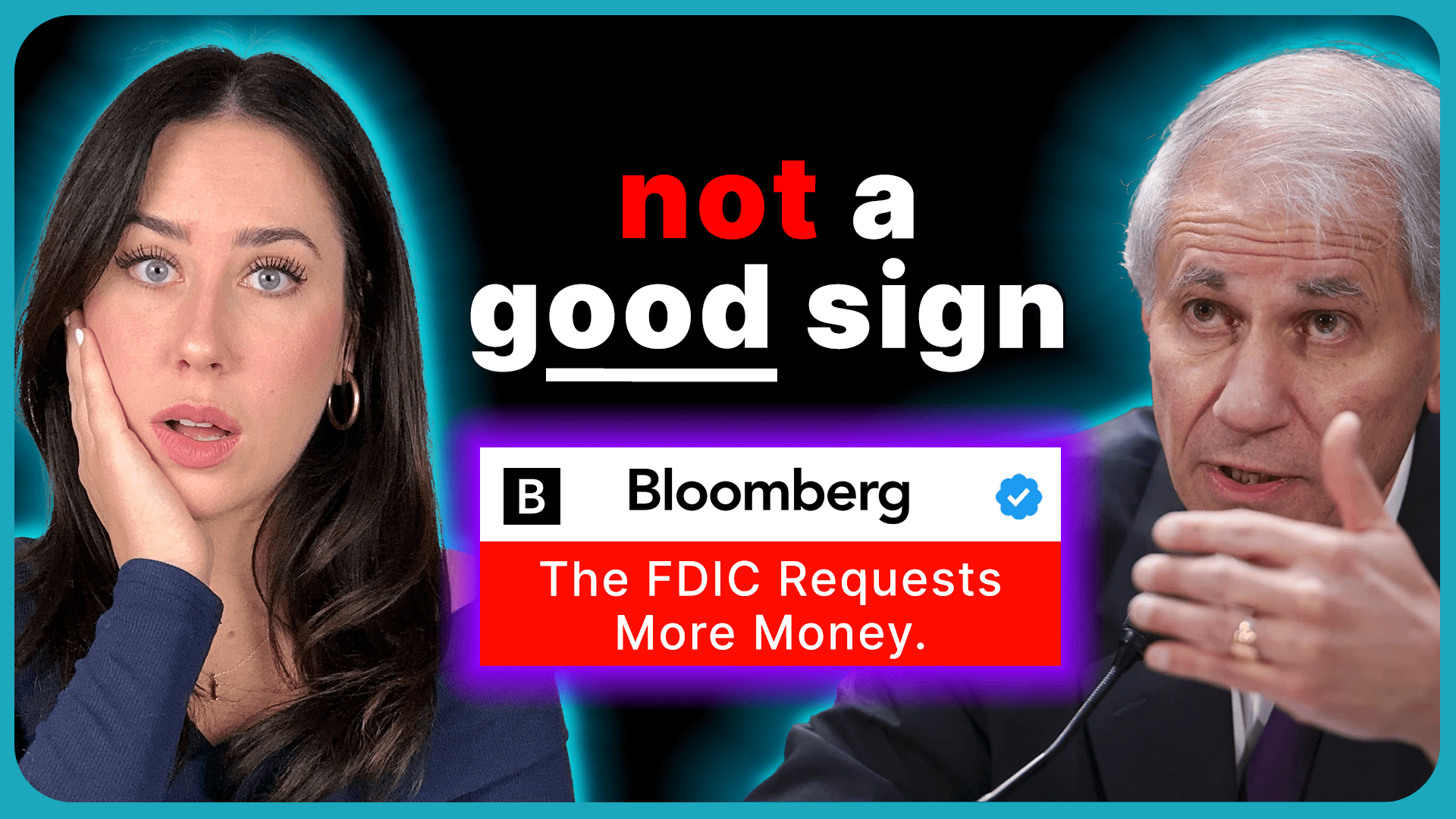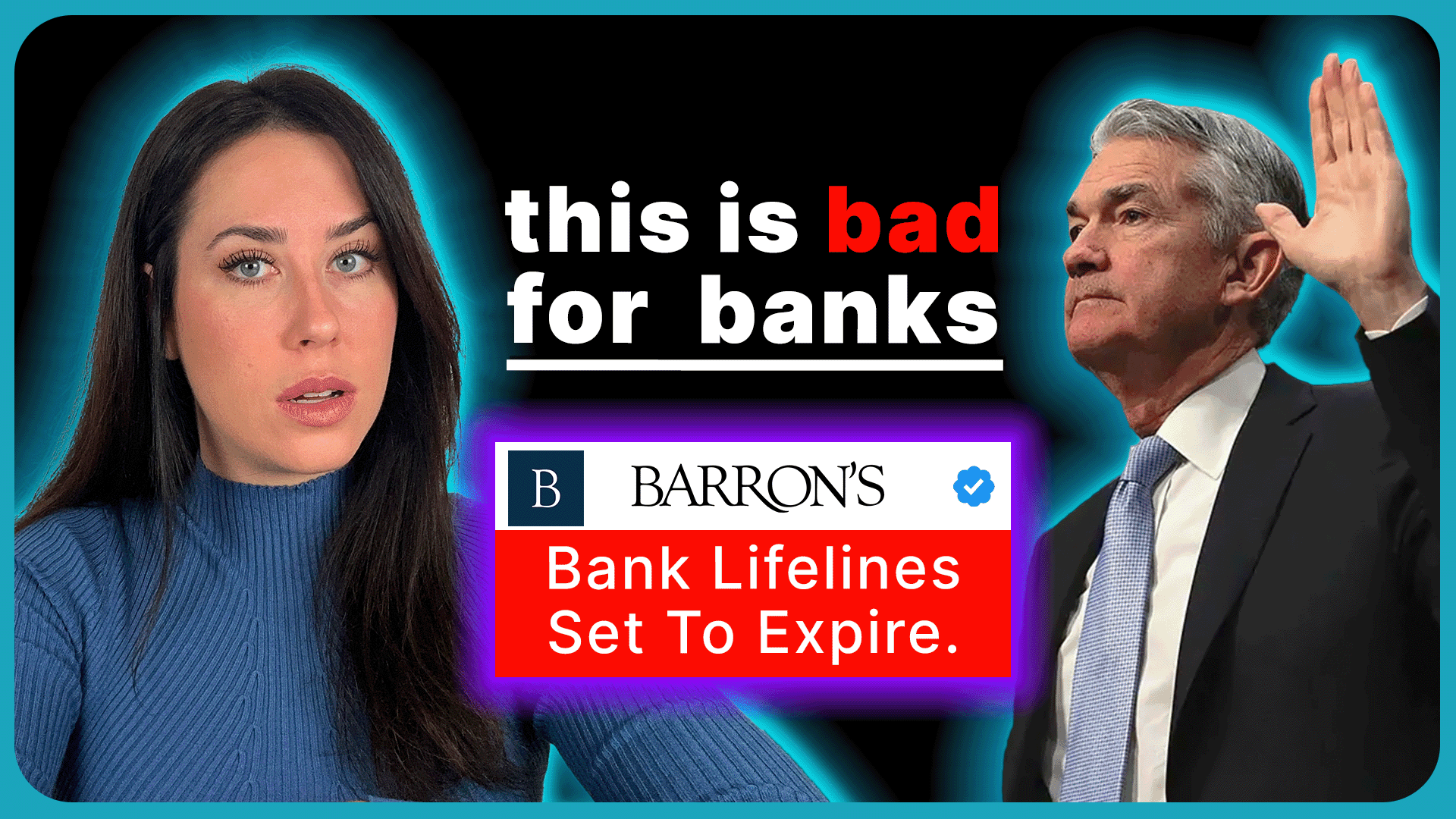The Dark Uncertainty of $684 Billion In Unrealized Bank Losses

Taylor Kenney uncovers the alarming reality of U.S. banks hiding over half a trillion dollars in potential losses, setting the stage for a widespread financial crisis. With parallels drawn to the Great Depression, Kenney reveals hidden vulnerabilities in the banking system, masked by accounting rule changes. Download the shocking chart and stay prepared for the looming financial storm.
CHAPTERS:
0:00 Bank Loss Coverups
03:37 Commercial Real Estate Losses
06:41 Investment Security Gains & Losses
07:52 Bank Of America
TRANSCRIPT FROM VIDEO:
U.S. banks are covering up hundreds of billions of dollars of unrealized losses that could result in a string of bank failures across the country. On top of that, these same banks are entering this year with a mountain of commercial real estate debt maturities, which will only compound in fast tracked the problem. Today, we’ll break down how all of these factors have created such a critical moment in time and what impact these catastrophic losses could have on you.
I’m Taylor Kenney with ITM Trading and this is tailor made economics. With U.S. banks sitting on an avalanche of over half a trillion dollars worth of unrealized losses, with more on the horizon, it’s no shock that people are questioning what is going to happen to these banks and more importantly, what is going to happen to your money once these losses are realized.
We have seen what happens to banks when they are forced to sell their assets at a loss. They fail. That’s exactly what happened to Silicon Valley Bank, among others, last year. But what happens to you and your money when it’s not a handful of banks, but rather a hundred banks, a thousand banks, multiple too large to fail banks?
The last time we saw this was during the Great Depression, and the current situation is looking bleak for banks and therefore for your financial security. Thanks in large part to new diminishing assets and a growing risk of default, resulting in a greater need for more liquidity. When banks need liquidity, they are forced to sell their assets to generate cash.
As it stands right now, most banks would be selling their assets at a significant loss. Some would claim that unrealized losses are irrelevant. There’s even a saying on Wall Street that a loss isn’t a loss until you sell. But if you’re forced to sell and you sell at a significant loss, they become very real very quickly. In the aftermath of 2020 and the injection of U.S. dollars into the system.
Banks had a surplus of cash, and with interest rates being historically low, they invested heavily into long term bonds, such as ten year U.S. Treasury bonds, which were considered safe assets. Unfortunately, interest rates were hiked shortly after, which caused the safe asset values of these bonds to plummet because there’s an inverse relation between interest rates and bond values.
As interest rates rise, the fixed rate of return on a bond actually is less favorable because there are better options available. It’s simple supply and demand. So now you have all of these banks holding on to all of these bonds that are worth far less than what they just bought them for. But does it really matter since they haven’t sold them yet?
Let me give you an example. And you be the one to tell me. Unrealized gains or losses occur when the value of something increases above or drops below the initial purchase price. For example, you buy a house in a couple of years, go by and the house is worth 20% more than what you originally paid for it. Your mortgage payment is the same.
You haven’t sold the house yet, so the cash isn’t liquid, but on paper you have a 20% unrealized gain. It works in reverse, too. So if a couple of years went by and your house was worth 20% less than what you originally paid for on paper, you have a 20% unrealized loss. Now, you tell me, do you think that that’s nothing, that that’s irrelevant, that when you were making important financial decisions, you wouldn’t take your home value into consideration as you’re making those?
And it’s not just these long term bonds that are giving us reason to be concerned. Banks are also facing a tremendous amount of pressure right now, thanks to impending losses from commercial real estate debt. So much of this commercial real estate is maturing this year at a time when refinancing is expensive. Rents are coming down, expenses are going up, and it’s estimated that 75% of these maturities are in trouble.
More assets that the bank will claim at a loss. What we have today is a perception of stability. Maybe not so much for you and I and those who follow these things closely, but for most there is the perception of stability, which means that it doesn’t take much to expose the underlying vulnerabilities of the system, just how fragile it really is.
Despite the banks best attempts to keep everything under wraps following the financial crisis of 2008, a significant accounting rule change was implemented to give banks some relief from the catastrophic collapse that they were facing. This change allowed banks to mark assets not as a fair market value or what those assets would sell for today, but instead to mark assets at their maturity value or what they would sell for at some point in the future.
This change helped to mask the real toxic assets and essentially was a way of them just cooking their books to make their balance sheets look more favorable. As an example, in 2008, banks were pricing their mortgage backed securities favorably based on a maturity value. Yes, the same junk securities that brought the entire global financial system to a crash were priced favorably.
The same securities that were worth nothing that no one would go near following the financial crisis. This, of course, was a way for them to make their balance sheets look better. That’s all good and well for your quarterly earnings. But remember, these maturity dates do become realized. You can’t put them off forever. And just because these toxic assets are hidden doesn’t mean that they’re not real.
Last year, we saw banks trying to ditch their commercial real estate loans because they clearly saw the writing on the wall of what was coming next. But no one wanted them because the sector was clearly plummeting and they would have had to sell at a significant loss rather than be in the red. Most banks chose to hold onto these loans in the hopes that a better offer would come along and in the meantime have been utilizing this accounting tool to make sure that the loans still looked favorable on their balance sheets, when in reality these are about to become another toxic asset and additional unrealized losses.
I’m going to show you the severity of what I’m talking about with the chart that shocked me that I think will shock you. Here you can see current day losses put into perspective. From 2010 up until 2020, two, banks on average reported quarterly unrealized gain gains of $20 billion. Now shift your focus to 2022 to present day and let that sink in for a moment.
Those losses are staggering. If you are as frightened as I am by these losses, I’m going to talk about what we can do. But really quickly, if you want a copy of this chart, I’ve made it available for download. Click the link for a free immediate download, No email required or anything. We all know how important it is to get the word out, so I wanted you to have a copy.
And if you’d like to share with someone who’s important to you, please do so. Now, in addition to these unrealized losses, there are waving red flags everywhere that banks are hurtling towards a catastrophic problem here. The headlines would have you believe the banks are thriving, that everything is well. But you know as well as I do that you don’t have to look very deep to realize that that is simply not the case.
Bank of America just reported $3.1 billion in net income for Q4. But no one is talking about their near $100 billion of unrealized losses. And it’s not just Bank of America, but rather all of these large institutions. If you read the news this past week, you would see that Q4 earnings came out and that many of the banks were downplaying the fact that they were lower than what they had anticipated or predicted, thanks in large part to a one time Q4 payment that they had to make to the Federal Deposit Insurance Corporation or FDIC.
This one time small Q4 fee was to the tune of $16 billion across the largest institutions to replenish the deposit insurance fund that was depleted after the string of last year’s bank failures. That should make you pause because that is not business as usual and that is not nothing. These banks are walking an absolute tightrope between public perception and reality, and they know how precarious it is and how close they are to falling off.
If there is even one with one whiff that they don’t have the assets or the funds available, which they don’t. And a bank run ensues, it could spell disaster for them. But more importantly for you and I, as a quick recap. U.S. banks have over a half trillion dollars in unrealized losses this year. A majority of commercial real estate debt is maturing, which will expose just how bad the sector is and further compound this issue for banks and hurt their balance sheets as banks need more liquidity.
They will be forced to sell off their assets at a loss which will make their unrealized losses very realized. And it’s at this point that the public will start to panic as they realized just how leveraged these institutions are and how little they hold. At which point your money is in jeopardy. What all of this shows us is that it’s never been more important to protect yourself by being outside of the system.
If you don’t have a strategy in place, you can see what’s coming. Be sure to take the first step and get one in place today. Not a strategy for these institutions or for these banks, but a strategy that has you and your needs at the core of it. Take the first step. Click the link below and get a strategy call in place today.
Also, if you’re like me and you cannot get enough information about what’s really going on, make sure that you checked out this past week’s interview with Daniella Carmona and David Webb, the author and creator of The Great Taking. In this interview, they expose how the system has been designed to take your money and so much more. Most importantly, we are all in this together.I appreciate your support. Thank you so much for joining me. As always, I’m taylor Kenny with itm trading. Until next time. If you are as frightened as I am by these losses, I’m going to talk about what we can do. But really quickly, I wanted to make sure that you had a copy of this chart. So if you like it, go ahead and download it below.
It’s free. No email required. We both know how important it is to have information, both accessible and shareable. So if you’d like to share with someone important to you, please feel free to do so.
SOURCES:
https://www.seattletimes.com/business/accounting-rule-change-could-end-bank-crisis-or-make-it-worse/
https://www.barrons.com/news/us-bank-citigroup-to-cut-20-000-jobs-in-medium-term-7b86399e
https://www.fdic.gov/analysis/quarterly-banking-profile/fdic-quarterly/index.html
https://www.businessinsider.com/commercial-real-estate-crash-debt-interest-rates-property-prices-outlook-2023-12
https://www.wsws.org/en/articles/2024/01/11/snuo-j11.html
https://www.cnbc.com/2024/01/12/bank-of-america-bac-earnings-4q-2023.html













